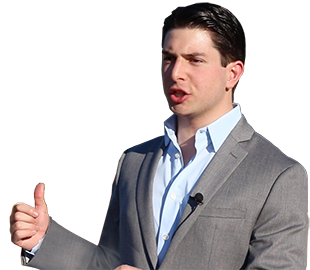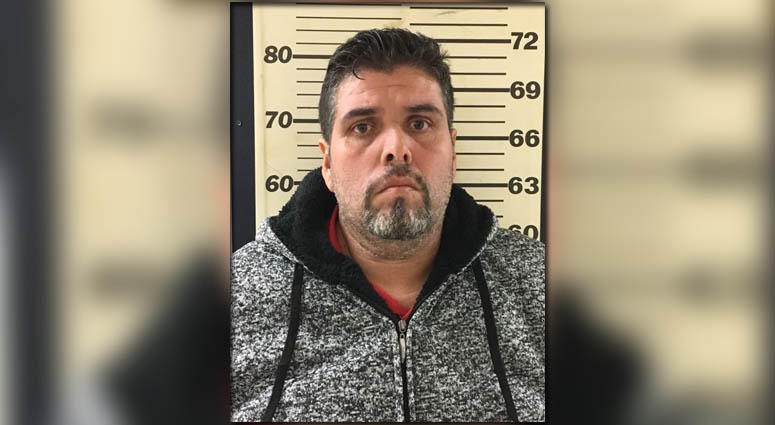Prosecutor: Mexican Drug King, Alleged Underlings Brought Enough Fentanyl Into NYC To Kill Millions
NEW YORK (WCBS 880) — A Mexican drug kingpin and five others were indicted Tuesday in an alleged drug smuggling conspiracy, which authorities said brought enough fentanyl into New York City to kill 10 million people.
In the indictment filed by the New York City Office of the Special Narcotics Prosecutor, Francisco Quiroz-Zamora, 41 – also known as “Gordo” – was charged with operating as a major trafficker, conspiracy, and criminal sale of a controlled substance.
An indictment alleged Quiroz-Zamora, of the Sinaloa Cartel, was the Mexican-based source of a recent large shipments of fentanyl to New York City, and alleged that
A resident of San José del Cabo, Mexico, Quiroz-Zamora allegedly arranged for narcotics to be smuggled from Mexico to Arizona and California on trucks and cars and with drug couriers. He allegedly communicated directly with New York City drug customers, and arranged for members of his trafficking network to conduct drug deals, prosecutors said.
“Kingpin or major trafficker charges carry a life sentence, and that’s important because he had direct dealings from Mexico with a distribution network in New York City and with an undercover officer, and he was responsible for sending to New York City at least 50 pounds of fentanyl, which is charged in the indictment,” New York City Special Prosecutor Bridget Brennan told WCBS 880 Producer Neil A. Carousso. “And you know, fentanyl is so deadly. It’s viewed to be responsible for what will probably turn out to be a record-breaking number of overdose deaths here in New York City in 2017.”
Quiroz-Zamaroa was charged in connection with a bust that netted 44 pounds of fentanyl at the Umbrella Hotel in the Bronx on June 19 of last year, and on Central Park West on Aug. 4 of last year, prosecutors said.
He received about $22,500 from an undercover officer through a Western Union wire transfer, and came to New York City on Nov. 27 of last year to collect more money from the undercover officer, prosecutors said. But agents tracked Quiroz-Zamora’s movements as he took a circuitous route from Texas to Connecticut by plane, down to Delaware, and then to New York on an Amtrak train, prosecutors said.
Quiroz-Zamora was arrested at Penn Station on Nov. 27 and was originally charged in a complaint in Manhattan Criminal Court. He has been in custody since Nov. 29.
Prosecutors said they also busted a stash house on Central Park West at 105th Street, which was receiving the drugs that were being supplied by the defendants.
“What we found there was it was basically a packaging location; that the people inside that location were packaging many, many thousands of little glassines that were being filled with fentanyl or heroin, and some kind of other substance, and then ultimately, the stuff was headed for street distribution, and that was in a lovely Central Park West apartment with many other people living inside, and when you think about it, it’s a very dangerous situation,” Brennan said.
Five other defendants were also charged in the indictment. Prosecutors alleged that Carlos Ramirez, 27, of Colorado, was caught in a bust with an undercover officer; Jesus Perez-Cabral, 20, maintained the Central Park West drug stash along with Johnny Beltrez, 33; David Rodriguez, 32, was seen carrying suspected narcotics into a car outside the Central Park West building; and Richard Rodriguez, 43, was an Uber driver who drove off with the drugs.
Brennan emphasized that her office is cracking down on fentanyl, with overdoses having reached an all-time high of 1,400 deaths in 2017. Seizures also spiked by a factor of more than 12, from 35 pounds in 2016 to 491 in 2017.
Brennan explained that fentanyl is about 50 times more potent than heroin, and is also cheaper to wholesalers – making dealing in it an attractive proposition for drug traffickers.
“Because it’s a synthetic drug, it’s probably a tenth of the cost of heroin. And so, what we are seeing is that the cartel is sending to the U.S. fentanyl in place of heroin sometimes, or it’s sending up a load that mixes fentanyl with heroin. Heroin being much more expensive, the fentanyl allows them to make a whole lot more money, since when the buyers are buying the little packages in the street, they don’t know whether it contains fentanyl or heroin – it could be either – but they’re going to be paying the same price regardless,” Brennan said. “So it really enhances their ability to make a buck.”
Brennan emphasized that millions could have been killed with the amount of fentanyl the drug traffickers brought to the city.
“Millions, I mean, if they were people who were not tolerant of opioids; who hadn’t been using for some time, it would kill many, many people, because the amount of fentanyl which would kill someone who is not accustomed to any kind of opioid really would fit on the tip of your little finger, so think about it – we seized 400-plus pounds; nearly 500 pounds,” she said. “Think of how much damage that would do.”
Brennan added that her office will be going after everyone in the chain of distribution of such dangerous drugs, but will not stop until finding and prosecuting the top suppliers. She emphasized how dangerous – and how disturbingly commonplace – fentanyl has become.
“Fentanyl is now being mixed in with cocaine. It’s being pressed into counterfeit pills. And so anything on our city’s black market could be tainted with this stuff, and it could kill you. So people have to be very, very careful,” she said. “I think prevention messages are very important. I think people need to become educated and recognize that this stuff can’t be played with.”








